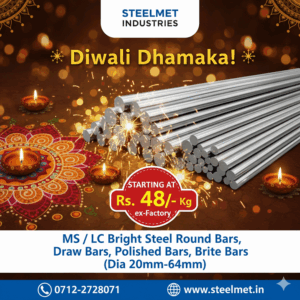A Deeper Cut: Understanding EN5 Series Steel
An analysis of the chemical compositions that define performance.
The Common Ground: Carbon Content
While all three grades—EN5, EN5A, and EN5B—share a similar carbon content range of 0.35–0.45%, this only tells part of the story. The true distinction, and the key to their varied applications, lies in the subtle but critical differences in other elements.
The Key Differentiator: Sulphur & Phosphorus
The secret to improved machinability is the intentional addition of sulphur and phosphorus. These elements, particularly the elevated sulphur in EN5B, are what separate a standard engineering steel from a high-performance, free-cutting steel.
Sulphur (S) Content Comparison
This chart highlights the significant increase in the maximum allowable sulphur content for EN5B, which is the primary reason for its superior free-cutting properties.
Phosphorus (P) Content Comparison
A slight elevation in phosphorus also contributes to machinability, with EN5B allowing for a marginally higher percentage compared to EN5 and EN5A.
Composition at a Glance
| Grade | Carbon (C) | Manganese (Mn) | Sulphur (S) | Phosphorus (P) |
|---|---|---|---|---|
| EN5 | 0.35–0.45% | 0.60–1.00% | 0.06% max | 0.06% max |
| EN5A | 0.35–0.45% | 0.60–1.00% | 0.06% max | 0.06% max |
| EN5B | 0.35–0.45% | 0.60–1.00% | 0.08–0.13% | 0.07% max |
The Machinability Verdict
The specifications for EN5 and EN5A were eventually merged into the free-machining variant 070M45 in the BS 970:1991 standard. The increased sulphur in EN5B is precisely what makes it a superior free-cutting steel, drastically improving its performance and efficiency in a workshop setting.
EN5B = Enhanced Free-Cutting Properties


